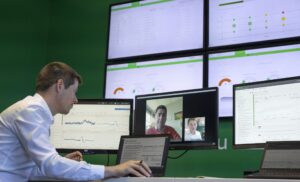Probably you’ve noticed that many of your IT devices have more than one power cord and probably you have assumed (correctly) it was all about providing redundant power to the device. But if you investigate a bit, you’ll find there’s great variation in how devices with multiple power supplies operate in practice.
A new white paper by Neil Rasmussen, Senior VP of Innovation for Schneider Electric and founder of APC, explains the issue in great detail – and offers sound advice for ensuring your dual-corded data center behaves as it should.
Naturally, as the paper explains, the key purpose of a dual-corded or dual-path electrical architecture is to ensure IT devices can keep operating in the face of a failure in some part of the power distribution system. Should one part fail, the load shifts to the other.
At least, that’s the theory. In reality, depending on the IT device in question, it may not work out that way. You may assume that a dual-corded IT device will operate correctly when powered from either cord and in more than 95% of cases, you’d be correct. The problem lies in ferreting out those other cases.
As the paper details, many reasons exist why the assumption may fail. It could be that the device has dual cords not for redundancy but simply as a means to get more power, by using multiple power supplies. Perhaps the device designers didn’t want to use a special, larger power plug, or the device was meant to be expandable over time. Using two power supplies addresses both issues – but does nothing for power redundancy.
Some devices also have three power cords and require two of them to operate correctly. But you can’t plug three cords into two redundant power paths with any guarantee that the device will survive the failure of one path. As the paper says, “it might survive the failure of the path with one cord attached, but would not survive the failure of the path with the two cords plugged in.”
Another common occurrence, especially in data centers where lots of different people have rights to access and change equipment, is when a dual-corded device has both cords plugged into the same power path. Naturally, the device will fail if the path feeding the cords drops.
Even when a dual-corded device is attached correctly to separate power paths, interesting things can occur when one of them fails. The IT device load may actually increase by 10% or more, because its fans speed up when a power supply drops out. The remaining power path and IT device power supply must be able to accommodate that load.
The paper also details some how some IT devices use a “power switch” type of architecture and some special considerations that must be taken for them.
And that’s just on the IT device side. Read the paper and you’ll also learn how to design and manage your data center power distribution system to assure you get the redundancy you’re after.
To learn more, download APC by Schneider Electric white paper number 206, “Overload Protection in a Dual-Corded Data Center Environment.”


